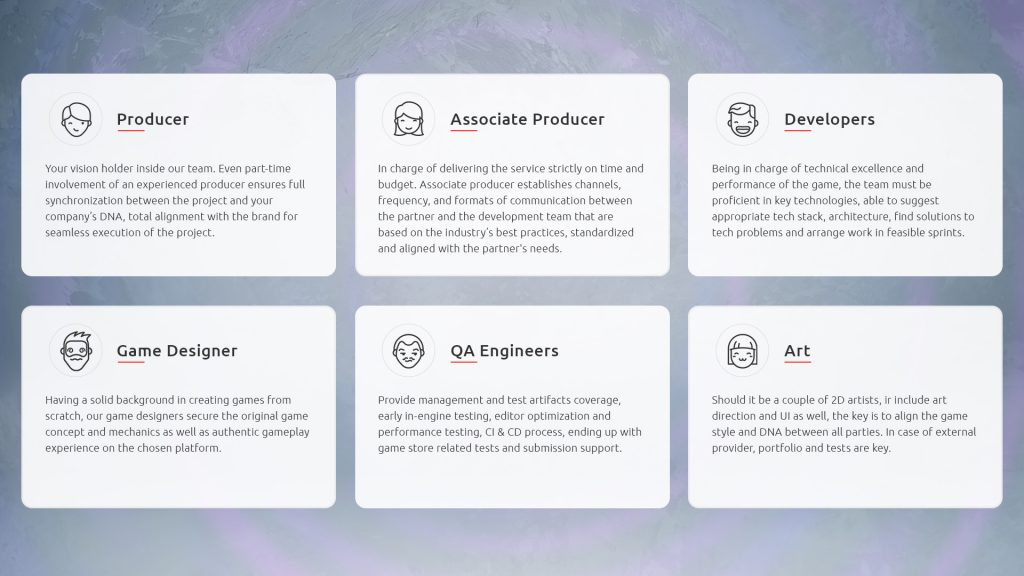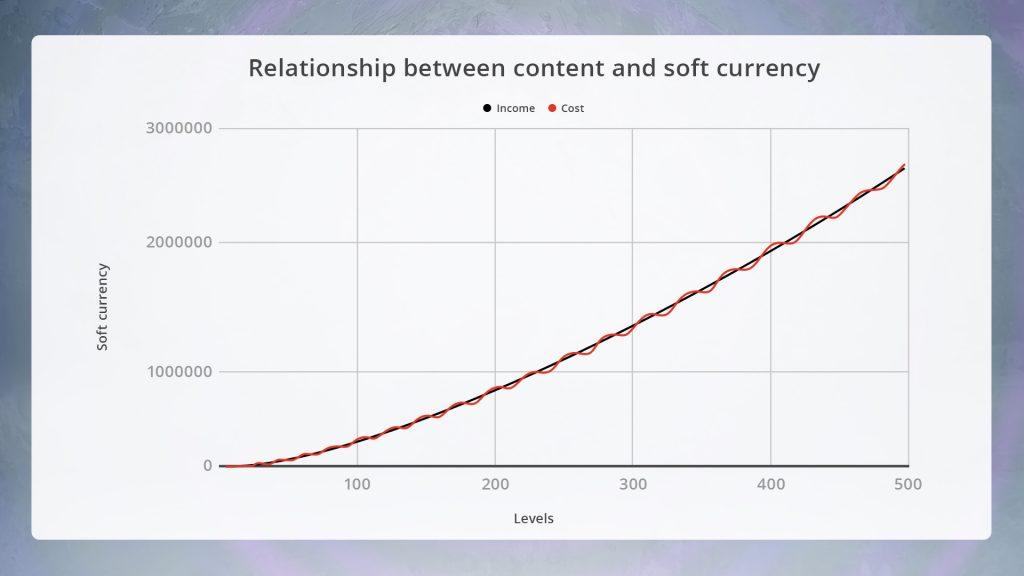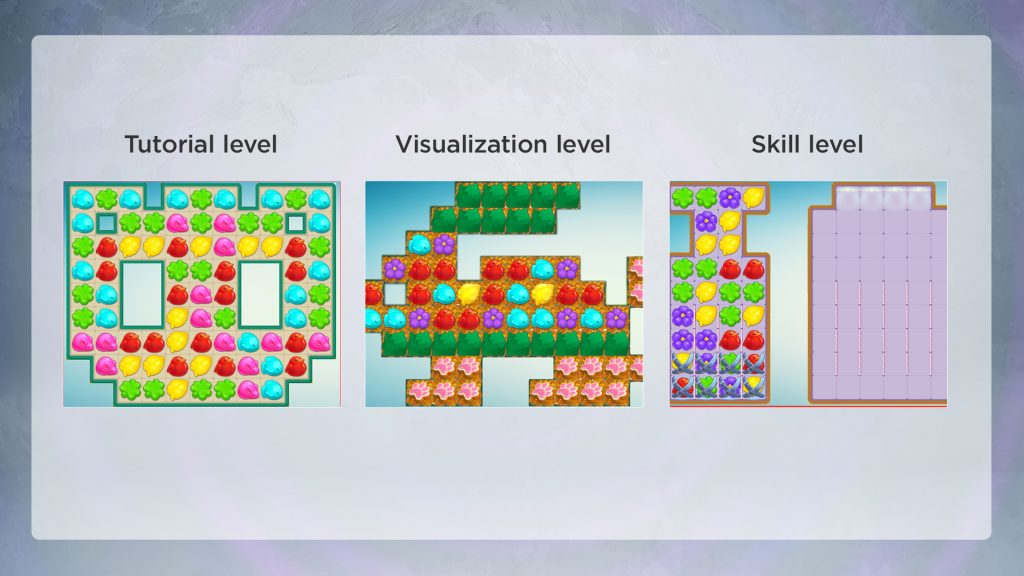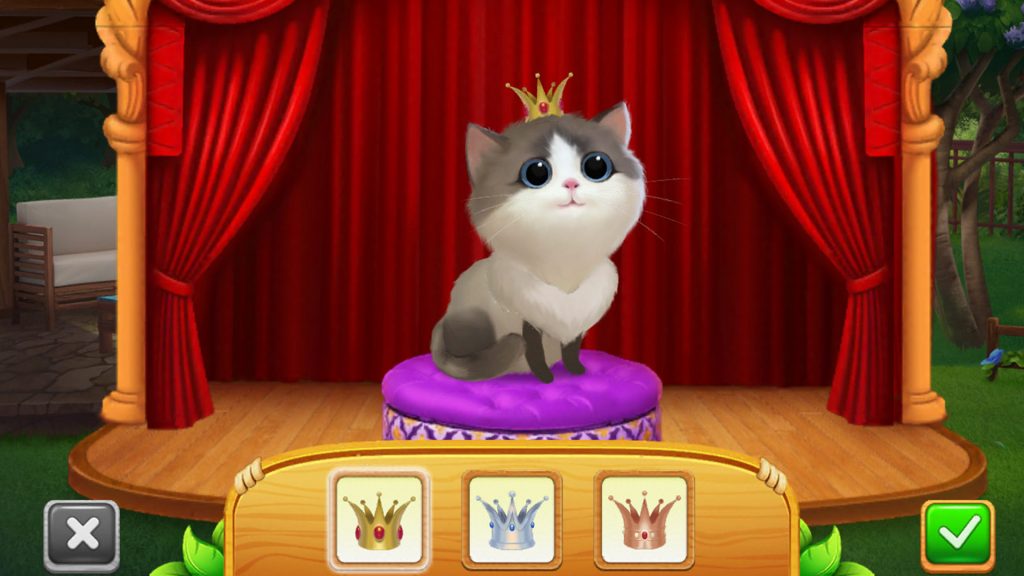How To Make A Match-3 Game: A Complete Guide
- Must-Have Features Of Match Three Game
- Plan Things Ahead During Pre-Production
- Lay Out Game Economy
- Pay Attention To Level Design
- Remember the Metagame Importance
- How To Make Your Match-3 Game Fun and Addictive
- After the Launch: Making Your Game Thrive
- Choosing an Engine
Match-3 tile puzzle games seem to be a perfect match for all mobile platforms, and the genre has been on top-grossing mobile game lists as long as these have been around. With relatively low time to market of games in this segment, there are still quite a few that didn’t even make it into the stores in time, or not at all.
Before embarking on your match-3 adventure, we invite you to take a look at the core conceptual advice on creating a match-3 game that will smoothen your game evolvement and land it into the mobile stores, with things going just as planned.
Must-Have Features of Match Three Game
We will start our match 3 game development guide with an introduction to their basic features, making it easier for you to make your own match 3 game. With thousands of games on the market, it is relatively easy to point out those:
Specific game design.
Be it a physics-based match-3 or a standard puzzler, the concept has remained the same since the 80s: the game has three (or now, more) kinds of tiles, board, and specific rules of how tiles of the same type collapse. Every new game introduces some key new mechanics on top of that.
‘Positive’ setting and meta.
In today’s games, almost all feature some cute characters and lovely animations to add up to the relaxing visuals of the board and bright pieces. The coloring makes it easy to distinguish between pieces of different types, so it’s easy for the player.
Free-to-play game economy.
To make a match-three puzzle game financially successful, the game needs to be hard just enough to be engaging and present challenges and meta to offer gamers an in-game shop.
Plan Things Ahead During Pre-Production
To develop a match 3 game, you need to start with a proper planning phase. Pre-production generally consumes a portion of the time you plan to develop a game. For example, 2-year project pre-production could take up to 6 months for a mobile title, but this estimate may vary greatly depending on the genre. Adding a pre-production phase cuts the overall production time since it streamlines all processes.
Start with the core concept. What’s your target audience? What are the pillars of your game? Take a look at the emerging trends, such as adding mechanics from other genres, such as RPG or combat. Think about what will make your game stand out and put that into writing; this will help keep focus later.
You’ll also need to refine a project duration estimation and team composition during this stage.

Since things may be hazy, we encourage you to look at our article on game pre-production core steps that may be of use.
Lay Out Game Economy
Any free-to-play game monetization and player engagement are mainly based on carefully thought-through game design, giving players almost instantaneous feedback from success and failure. Moreover, the quantities of anything and everything in a game should be accounted for, with prices in the game store carefully set and based on actual in-game economy metrics. This approach to balancing creates an addictive combination of ease and strain, quickly gripping the player’s attention with quick shots of happiness and anger straight into the nervous system.
Progression can be tricky, though. Once you have established the basic values of your magic coins, crystals, or whatever soft currency you’re going to use in the game, it should also depend on the content already introduced to the player so that there is no inflation.

Feel like creating long excel files yet? We encourage you to. And plan for balancing out as many levels as you prepare to release for a soft launch, with all the metrics planned, such as difficulty, attempts, quantities of game mechanics, etc. If you need some advice, check out the 5 basic steps in creating a balanced in-game economy.
Pay Attention To Level Design
For match-3 puzzlers, the level design is the butter and bread. Start with studying the competition and noticing what makes them stand out. Notice the best ratio of new elements per level, the elements’ look and feel for most popular games in different geographies and target audiences, and the most trendy mechanics.
With these findings in mind, put all your ideas together and filter out several most promising mechanics and elements. Prepare a list of properties of every component, ensuring that they reflect the initial concepts and create the elements’ images. Remember, nothing exists in isolation art-wise. See how elements combine with the tiles, create prototypes, and test out the player’s experience of the game, which should vary from level to level. Some levels should be challenging, others – be easy and look good, so yes, it’ll take another long list in excel to put all those requirements in order. Need more info on level design nuance? Check our level design articles in our blog.

Remember the Metagame Importance
Creating hundreds of levels is great, but not enough. The key is to find the ways to stand out from the competitors by bringing something new to the table, but at the same time, manage to maintain those match-3 mechanics that your audience loves. One great way to do it is by creating a metagame that is fine-tuned for your target audience.
Metagame gives players the ability to progress and play not only in the tile fields but also in living out some story: and it may vary from dressing up cats to house restoration or space exploration. The more exciting and engaging stories behind the tile-matching game – the better. Make sure to calculate the game economy for the meta as well.

How To Make Your Match-3 Game Fun and Addictive
To make a match-three game engaging, let players experience the whole range of emotions. The player won’t feel the buzz of victory if they haven’t tasted the bitterness of defeat because the juice of the game comes from the balance between complex & easy, interesting & boring. Accurate adjustment of this balance allows players’ vivid emotions, such as the last move win. The expenses curve may vary in a sine wave and income, or one of them can be linear. In this case, the player will experience a deficit in some periods and a surplus in others.
Creating such flow, we influence the player’s feelings because sometimes he has to strain himself and get rewarded. The best practice is to offer 2-3 emotions per game session. However, there are challenging levels when a player feels the only rage during the whole session: rage forces one to pay to get through obstacles, and such tricks can be used for monetization.
After the Launch: Making Your Game Thrive
So, what do we do once we’ve prepared a game and sets of levels that fit our difficulty curve? We invite people to play it. Make sure that you track all the needed indicators at the soft launch stage and set up a team that will enhance the levels according to the live ops data. While AAA titles may be a finished product once released, the iron grasp of match-3 engagement is based on continuous improvement of its levels, decreasing churn, and fine-tuning the player’s UX.
Choosing an Engine
Choosing the right engine is one of the most important things for a developer. There are various engines, namely Unity, Unreal Engine, GameMaker, and many others. We’ll cover the most popular ones.
Unity
As their website says, more than half of all new mobile games are created in Unity. The engine gives you great options for graphics, monetization control, and other features. Its Adaptive Performance feature promises smooth performance over different devices.
Unreal Engine
Unreal Engine 4 has a unique interface, which makes coding easier for beginners; plus, its library offers many assets to use in your game. It’s free to use up to a point, after which you should pay a 5% royalty.
Here’s a tutorial from Unreal on making a match 3 game on Unreal Engine 4.
Our Experience
Room 8 Studio’s team has years of experience working in the genre, from co-development to full-cycle development and even creating our tiles. This enabled us to share expertise in match 3 game development. You make find the most relevant information on the topic below:
- Project: Rovio’s Angry Birds Dream Blast
- Project: Ember Entertainment’s Meow Match
- Project: Playtika’s Cat Force
- Article: Smart & Casual: the State of Tile Puzzle Games Level Design (Part 1)
- Article: Smart & Casual: the State of Tile Puzzle Games Level Design (Part 2)
- Article: 5 Basic Steps In Creating Balanced In-game Economy
- Article: Game Pre-Production Core Steps
Final Thoughts
Building a match 3 game requires an experienced team with a broad set of expertise in addition to pure engineering and art. Whether you need to find a team to take on a full-cycle project or consult on specific parts, Room 8 Studio’s team is always happy to help.
Have a project in mind? Let’s talk!



